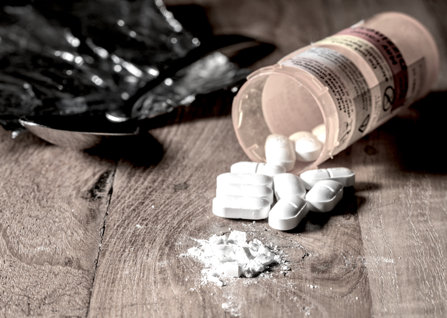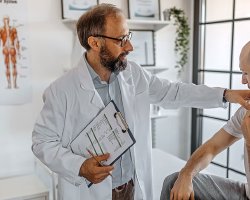How Our Underestimation of Opioids Lead to an Epidemic

At this point, it is pretty clear to me that the United States of America is suffering from a crippling and extremely derisive opioid addiction epidemic. Sometimes, we have a hard time swallowing this bitter truth. After all, the United States is supposed to be one of the greatest countries in the world, and it certainly is. But in some areas, we appear to be very lacking. Lately, one of these areas has been the health condition of the American people. Simply stated, Americans are not as healthy as they should be given how much the U.S. excels in other categories. Why is this?
One of the primary reasons why the condition of health in the United States has been declining in the last couple of years has been because of the epidemic-level proportions of drug and alcohol addiction that our country now faces. According to the Substance Abuse and Mental Health Services Administration, there are no less than twenty-four million Americans who are struggling with an addiction to drugs and alcohol.
This is a significant percentage of our society.
We Went Wrong with Pharmaceutical Drugs
Around the turn of the century, some big changes were made in the medical industry to bring pharmaceutical drugs to the forefront of how we address the majority of our health problems. Multiple medical organizations such as the American Medical Administration and other medical institutions that govern how we approach health in the U.S. met with pharmaceutical industries to organize better prescription drugs for use in middle-class America.
The biggest change that occurred was that the American Medical Administration added a fifth vital sign to the list of vital signs that doctors must check when examining patients. The fifth vital sign became the varying degree or lack thereof of pain that a patient is experiencing at the time of examination.
To date, the top vital signs that need to be addressed first and foremost in patients are:
- Heart rate
- Body temperature
- Respiratory function
- Mental faculty
There are a few others, but when a patient comes to a doctor, these four signs are checked for and addressed first and foremost, as they are the instant indicators of the current condition of that patient’s health. However, when the AMA added the physical phenomena of pain to the list vital signs, it created an entirely new incentive and priority for doctors to address pain in their patients.
Around that same time, pharmaceutical giants offered their “miracle drugs” in the form of opioid pain relievers as the supposed “perfect solution” to pain. At the time, they promised that these drugs had little to no side effects, were not addictive, and were the “miracle drug” for any patient who struggled with any degree of pain. And because the American people were hearing it from doctors, (individuals that they knew and trusted and respected), the entirety of America swallowed the sales pitch, hook line, and sinker.
Practically overnight, the American people swallowed the sales pitch of opioid pharmaceuticals and believed that these drugs were helpful and beneficial. Little did they know that it would be these very same pharmaceutical drugs that would end up causing the greatest of our problems.
From 2001 to 2005, the production, proliferation, and distribution of high-strength opioid pharmaceuticals into the hands of the American populace increased by over three-hundred percent. During that same time period, overdose deaths and admissions to treatment centers for opioid dependence also increased by three-hundred percent.
Right off the bat, the American people were completely blindsided by how addictive and overpowering opioids were. Opioid pain relievers proved to be habit-forming, mind-altering, and highly addictive. What was supposed to be a nationwide solution to chronic and acute pain phenomena ended up being a trap door into both chemical and psychological dependence. We underestimated opioid pain relievers, and since 2001 it has cost almost half-a-million lives.
Getting Ourselves Out of the Trap

Around 2012, enough pressure was brought to bear against Big Pharma by angry patients and doctors alike that pharmaceutical organizations innovated what they called “abuse-deterrent opioids.” Abuse-deterrent pain relievers were supposed to be painkillers that still got the job done of reducing pain levels while also carrying abuse-deterrent properties. These drugs were marketed as the “non-addictive painkiller,” though again, the American people believed pharmaceutical companies when they shouldn’t have.
The drugs ended up being very addictive indeed.
As it turned out, abuse-deterrents were simply a strategy by pharmaceutical giants in an effort to remove pressure from them for causing the opioid epidemic in the first place. Abuse-deterrents were just as likely to create addiction, as one can still get high from them by simply swallowing them. One cannot crush them up into a powder and snort them or dissolve them in water and shoot them with an IV, so some addicts simply opted to turn to heroin for a cheaper and more potent high instead. The result? Now we had an opioid addiction epidemic that includes both pain relievers, heroin, and synthetic opioids. If anything, abuse-deterrents made the addiction scene worse.
When all of the cards are on the table, the only way to reverse the addiction epidemic that we are mired in, (specifically as pertains to pharmaceutical drugs), is to reduce our reliance on such drugs. We need to push for more holistic and alternative approaches to medicine, methods of helping Americans with health problems that do not create more health problems in tandem. We need solutions that are beneficial and not so risky. We need medical solutions that solve the health problem without creating other health problems of its own.

Big Pharma would not necessarily want the average American to know about it, but there are alternative methods to pain relief that do not carry such risk for addiction and abuse. Just a handful of these are:
- Valerian Root
- Ginger
- Capsaicin
- Turmeric
- Willow Bark
- Magnesium
- Cats Claw
These are just a handful of the holistic remedies that can handle the vast majority of pain problems that the average American faces. We don’t need high-strength opioids, especially after we consider the massive threat and danger that has befallen our country thanks to these types of drugs.
As a unified group, we need to push for medical solutions that do not carry such great risk. We need to insist on holistic alternatives to pain relief, and we need to strive for health solutions that do not create other problems of their own. Most pain problems that Americans struggle with do not need high-strength opioids. In fact, the top, four phenomena that pain relievers are prescribed for are back pain, joint pain, headaches, and mouth/jaw pain. But if one thoroughly examined the fine print on any prescription opioid pill bottle, one will find that these drugs are not even intended to address low-level but chronic pain!
Such phenomena can be easily handled with over-the-counter aspirin or holistic remedies. We are an over-medicated society, with our population only comprising five percent of the world’s population, yet we consume seventy-five percent of the planet’s supply of pharmaceutical drugs every year. That has to change.
Sources:
- https://teens.drugabuse.gov/drug-facts/prescription-pain-medications-opioids
- https://jamanetwork.com/journals/jamainternalmedicine/fullarticle/2110991
- https://www.health.harvard.edu/blog/report-highlights-dangers-opioid-painkillers-201501157615
- https://www.drugabuse.gov/drugs-abuse/opioids
- https://blog.samhsa.gov/2012/05/22/national-prevention-week-prevent-illicit-drug-use-and-prescription-drug-abuse/#.W5vM5-hKjIU


 ®
®